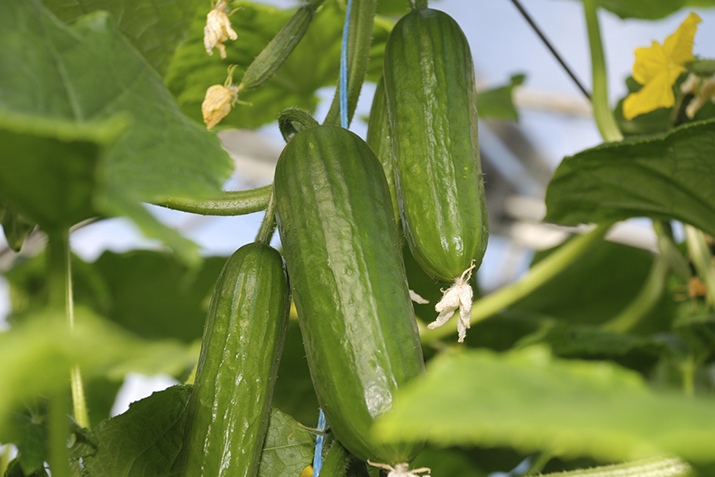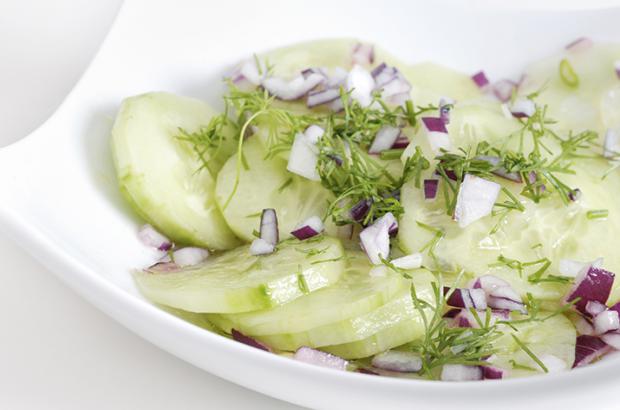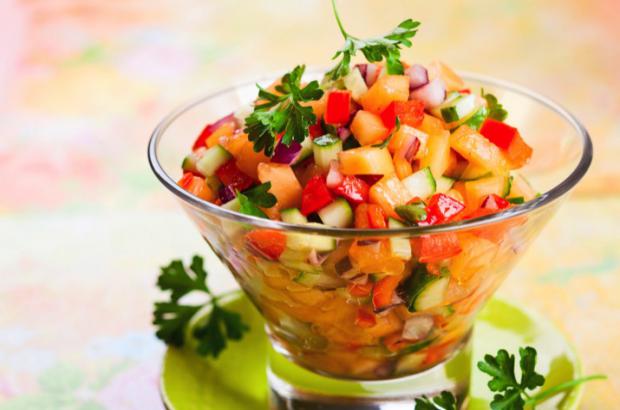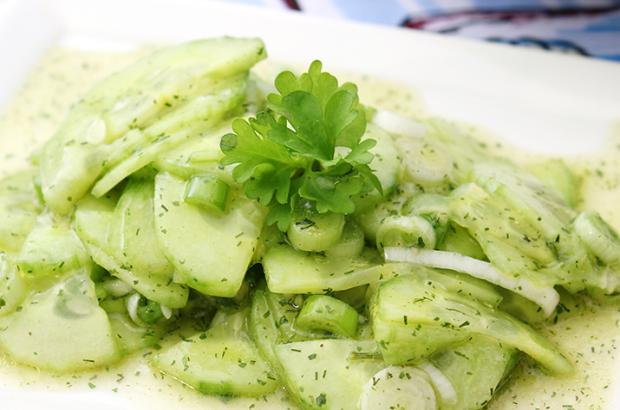Article
Cucumber

"Cool as a cucumber" is an apt idiom—cucumbers have a water content of over 90 percent and an internal temperature that's sometimes as much as 20 degrees cooler than the outside temperature.Actually a fruit with an enclosed seed, cucumber is in the same family as zucchini, pumpkin and watermelon. It was used for both food and cosmetics in ancient Egypt, Greece and Rome. The French cultivated cukes in the 9th century and the English in the 14th century. European trappers introduced Native American Indians to cucumbers in the 16th century, and in the 1800s colonial gardeners were growing many cucumber varieties.
Today, China is responsible for more than half of the global production of cucumbers, followed by Turkey, Russia, Iran and the U.S.
A very good source of vitamin C and molybdenum (a mineral), cucumbers are also a good source of vitamin A, potassium, manganese, folate, dietary fiber and magnesium. Some cucumbers are grown to be eaten fresh; these are called slicing cucumbers. Others are cultivated for pickling. Some cukes, like the sweet, flavorful lemon cucumber, can be used for either.
Cucumbers range in size and color from green to white, smooth or ridged, seedless or seeded, thinner skinned or thicker skinned.
Slicing varieties include Armenian (long, crunchy, thin skinned), English or Burpless (foot long, thin skinned, mildly flavored, easy to digest), and Persian (small, sweet and seedless, with very thin skin and mild flavor). Pickling varieties include Carolina (white spined and blocky), Gherkin (the smallest of the cukes), Kirby (short and bumpy, with yellow to dark green skin) and Lemon Cucumber (a small, round, pale yellow, sweet cuke). A thin-skinned variety called "c-thru-cucumber" was introduced in England in 2008.
Cucumbers' cool crispness serves as a counterbalance to hot foods: a cucumber raita with a spicy curry, for example, or a few slices of cuke on a spicy chicken sandwich. In this Thai Cucumber Salad with Peanuts, fresh cukes play against a curry dressing and jalapeños. They make a great addition to Spring Rolls, along with tofu or meat, rice and assorted veggies.
Cucumbers are distinctive and flavorful enough to be featured in their own recipes, too, like Cucumber Salad with Fresh Dill, Marinated Greek Cucumber Salad and Cucumber Salsa with Feta. They also make great partners with lively radishes in this Radish and Cucumber Salad or an array of colorful bell peppers, black olives, tomatoes and fresh mozzarella in a Classic Chopped Salad.
While often available year round, the peak season for cukes is May through July. Look for cucumbers with firm, rounded edges and bright skin. Avoid yellow, puffy cukes with soft spots (which means they're soggy) or wrinkles at the ends. If there's an area of yellow or white on one side that's okay; it's where the cucumber touched the ground. Note that thinner cukes usually have fewer seeds than thicker ones.
Store cucumbers in the refrigerator for several days, and wash just before eating. After cutting, wrap the end in plastic or place in a sealed container in the refrigerator. Don't let cucumbers freeze or they'll become mushy.
Cucumber seeds are edible, but they can be removed with the tip of a spoon, if you prefer.
Read more about the many types of cucumbers in our article on Kinds of Cukes. Learn about pickling cukes in Brine Time.













